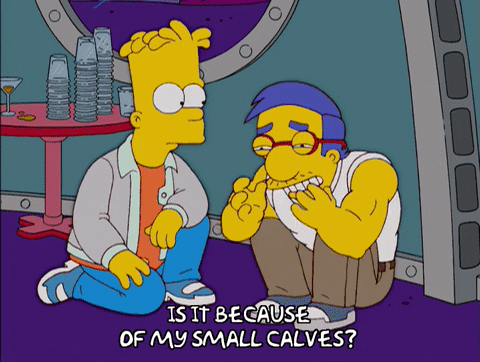Easy Exercises to Prevent Shin Splints
We have had athletes of all sports coming through our doors who deal with a lot of running. Running on hard ground, especially throughout the summer, they tend to be more prone to getting shin splints. We need to understand why this happening. It happens from us running on harder ground, dry ground, or in cleats which tends to develop a decent amount of stress and compression on the shins. This can be directly related to the bones and/or directly related to the actual muscles around the entire ankle.

A few things come into play. There is constant compression on the actual joints which can lead to inflammation which can lead to a whole bunch of stress on the muscle pulling off the bone quite a bit. There is also a point where that compression can lead to stress fractures or anything along those lines.
As coaches, we need to have ways to stabilize and support the joints from the ankle up into the knee. The movements we are going to utilize will target different joints from an isolated perspective, but also movements we use everything in conjunction synergistically to develop greater ranges of motion in our joints and full stability.
5 & 4. Tibialis Raise & Crouched Crawl Plantarflexed
The tibialis raise is deceptively difficult. This is a movement where we can be on a slanted board with the heels elevated and raise our toes all the way through a full range of motion. We can do this movement standing on a plate where we allow our toes to drop and then raise our toes through a dorsiflexion movement all the way back up through a full range of motion. This will really target the front part of the shin.

The tibialis, the front part of the shin, is a part where a lot of people struggle with full-on muscular coordination. It is not a movement that is trained regularly. It is a movement that needs to be done in isolation. That is a big concept. Old school bodybuilding principles tell us that isolation movements allow us to develop muscles specifically for the muscular action it needs to do in a compound movement. So now if we develop that front part of the shin, we will not only get stronger but it will help us coordinate with a compound movement.
That is why we superset the tibialis raise with a crouched crawl in a plantarflexed position. Think about sneaking around like a cat high up on the toes, the forefront of the foot with the heel super, super high. Doing these movements together as a warm-up for three sets of twenty for the tibialis raise followed by sets of twenty meters of the crouch crawls. This will help strengthen the feet, which in turn strengthens the ankle joints. On top of that, we will develop more mobility in our knees and hips.

Face it, a lot of shin splints come from people having very, very tight ankles. That leads us to our next exercise.
3. Calf Raise
We want to see the Achilles tendon get nice, long, and deep. We want to cue athletes to spread their toes when they are nice and deep. We want the toes spread open and grabbing the floor to make more contact. This will help us run with our toes open to absorb more force and make more contact with the ground. By training this way with the toes spread wide while going through a full range of motion, we are teaching the body how to recruit through dorsiflexion into plantarflexion. On top of that, the way we are spreading our toes out will improve the way our foot strikes when we run. This leads to greater force absorption which decreases the likelihood of shin splints.

This will increase mobility through the Achilles tendon. It will also increase the strength in the muscle to stabilize the entire joint up into the knee. We will also improve the way we absorb force.
Do this movement for three sets of ten reps holding dumbbells like a farmer’s carry or with a barbell on the back.
2 & 1. Plantarflexed Split Hold & Quarter Squat Plantarflexed Hold
We like to utilize these movements towards the end of a workout as an accessory. Or, if there is a serious issue with shin splints, do them at the beginning because they are isometric muscular actions.

In the first movement, we want the heels elevated in a split position holding a dumbbell in one hand. We will hold this movement from an isometric perspective. We want the front and back heels elevated. We are going to really focus on how our knee joint works synergistically with our ankle, how we hold the hip flexion position, how our VMO starts to contract, and how our quads and hips interact while in plantar flexion. So now we are holding a simple position while teaching the body co-contractions in various joints. This is a key skill for the body to utilize to help prevent injury. We want to hold this position for three sets of thirty seconds on each side to work the ankle joint.
This position will help us with our vertical jump, being faster, and how to utilize the toes with the calves. This movement is really, really important despite its deceptive simplicity.
Now pairing the first movement with the second movement of the quarter squat plantarflexed hold, a bilateral position, will help a lot of various athletes becoming more aware of how they move. The bilateral quarter squat with an isometric hold goes a really long way. It will be felt in both quads all the way up into the glutes. We can hold our posture more upright and hold dumbbells or goblets to make it more difficult.

This will lead to the body feeling healthier in not only the ankles but in the knee joint because the ankles are more stable.
Recap
These are really unique concepts that can be done right now in the home--these exercises can be done anywhere to positively impact the shins. Do these movements three to four days a week as warm-ups and one day a week as strength training targets where we use progressive overload.
Use these five exercises to improve shin health and increase speed. Let us know how which exercises you plan on using and how they end up helping performance running, playing sports, or overall health.
DANE MILLER
Dane Miller is the owner and founder of Garage Strength Sports Performance. He works with a select handful of clients on building comprehensive programs for fitness and nutrition. Several times a year he leads a workshop for coaches, trainers, and fitness enthusiasts.


